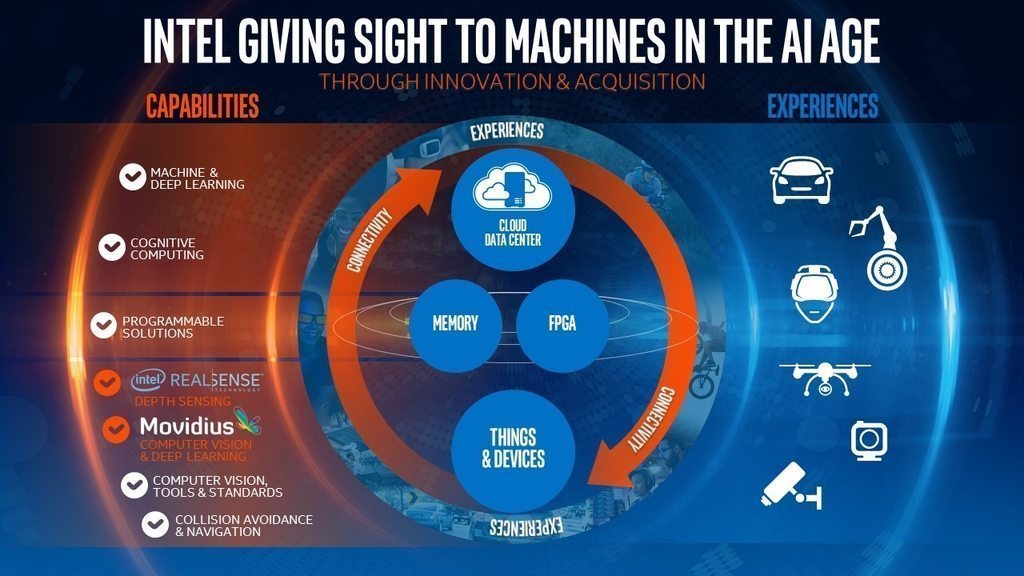How will the acquisition help Intel?
Combined with Intel’s existing assets, Movidius could potentially aid Intel with low-power, high-performance System on a Chip (SoC) platforms for accelerating computer vision applications. The deal pans out well in line with Intel’s RealSense vision and strategy and will possibly see growth after the integration of VPU (Vision Processing Unit) platform for on-device vision processing by Movidius.
Josh Walden, Senior Vice President and General Manager, Technology Group, Intel believes, that RealSense depth-sensing cameras allowed devices to “see” the world in three dimensions. And the aim continues, to build a suite of capabilities that open arenas in recognizing objects, understanding scenes, authentication and tracking and navigating. In an Intel blog, he said, “As devices become smarter and more distributed, we recognize that specific SoC attributes will be paramount to giving human-like sight to the 50 billion connected devices that are projected by 2020.”
“We see massive potential for Movidius to accelerate our initiatives in new and emerging technologies. The ability to track, navigate, map and recognize both scenes and objects using Movidius’ low-power and high-performance SoCs opens opportunities in areas where heat, battery life and form factors are key. Movidius’ market-leading family of computer vision SoCs complements Intel’s RealSense offerings in addition to our broader IP and product roadmap,” Walden added.

Intel also plans to deploy the technology it is buying in domains like augmented, virtual and merged reality (AR/VR/MR), drones, robotics and digital security cameras. Additionally, Movidius will also bring algorithms tuned for deep learning, depth processing, navigation and mapping, and natural interactions, in enhancing and bolstering RealSense capabilities, says Intel.
Post-acquisition Movidius claims that it will retain its talent and the start-up mentality. The Dublin-based company which states that it is working with names like DJI, FLIR, Google and Lenovo to give sight to smart devices including drones, security cameras, AR/VR headsets, is ambitious to address growing challenges of AI and getting devices ‘not just to see, but also to think’.
Remi El-Ouazzane, CEO, Movidius, in another blogpost, commented:
Movidius has been attacking this challenge at the device level – combining advanced algorithms with dedicated low-power hardware. At Intel, we’ll be part of a team that is attacking this challenge from the cloud, through the network and on the device. This is very exciting.
However this isn’t Intel’s first buy in the AI space. Earlier, in August, it acquired California-based startup, Nervana to enhance the deep learning performance and Total Cost of Ownership (TCO) of its Intel Xeon and Intel Xeon Phi processors.
